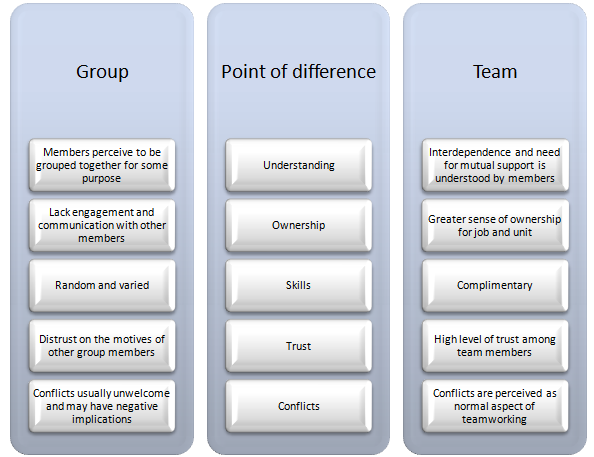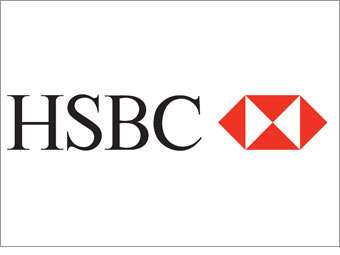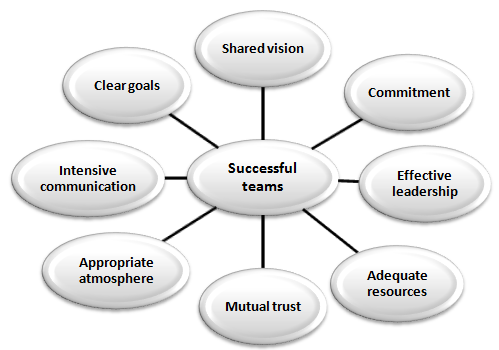Posts by John Dudovskiy

Note: the following post is from 2012. You can access the latest Hilton Worldwide Holdings Inc. Report published in August 2016 here. Hilton Hotels & Resorts is global hotels and resorts company with more than 540 locations in 78 countries (A Room for You, 2012, online). The parent company, Hilton International comprises a range of famous brands such as Waldorf Astoria Hotels & Resorts, Conrad Hotels & Resorts, Doubletree, Embassy Suites Hotels, Hilton Garden Inn, Hampton Inn, Homewood Suites by Hilton, Home2 Suites by Hilton, and Hilton Grand Vacations (Our Brands, 2012, online) Position of Hilton Hotels & Resorts within Travel and Tourism Industry in the UK Travel and tourism industry in the UK represents one of the key sectors in the national economy and according the research conducted by Oxford Economics “travel and tourism’s total contribution to GDP in the UK was GBP 101 billion in 2011 or 6.7% of total GDP” (The World Travel & Tourism Council, 2012, online) The following figure represents the structure of the UK tourism industry, and within this structure Hilton belongs to accommodation category. Moreover, the UK is the second biggest market for Hilton Hotels & Resorts after the US, and thus the UK market represents a point of focus for Hilton strategic level management. Hilton Hotels Main Stakeholders and Their Interests Stakeholders of company’s including Hilton Hotels & Resorts can be divided into two categories: internal and external. Internal stakeholders represent parties that belong to Hilton such as shareholders and employees. The primary interests of shareholders are profit maximisation, whereas employee interests include gaining a wide range of tangible and intangible compensation from their employment. External stakeholders, on the other hand, are parties that do not belong to Hilton; nevertheless they have interest in the business from various perspectives. The…

It is important to stress that “the group definition describes the individuals within it as having a common interest, while the team definition describes the members within it as striving for a common goal” (Carter, 2009, p.4). Moreover, there is an individual accountability for group members, whereas the level of accountability for team members can be individual, as well as, mutual. Also, groups and teams differ in terms of creativity in a way that in groups creativity may be suppressed due to distrust and lack of communication amongst group members, while in effective teams high level of creativity is achieved through synergy and communication (Schermerhorn, 2011). The following figure illustrates the main points of differences between teams and groups: References Carter, M. (2009) “Unique Team Enhancement: All About Team Building and How to Build a Great Team” Dorrance Publishing Schermerhorn, J.R. Jr. (2011) “Introduction to Management” 11th edition, John Wiley & Sons

Team building blocks can be explained as foundations for effective teambuilding. The following most essential team building blocks are going to contribute to the success of HSBC customer service team: Appropriate leadership. Effective leadership practices are in place in HSBC derived from strong leadership of HSBC Group CEO Stuart Gulliver. Clear goals and objectives. Team goals and objectives to be developed according to SMART principle, the abbreviation standing for specific, measurable, achievable, realistic, and time-bound (Courtis et al., 2006) is going to contribute to successful team operations. Effective operating procedures. The latest IT facilities have been integrated within HSBC customer services and these make team operating procedures more convenient. Developing individuals. The issues of developing individuals are approached effectively by HSBC management with specifically designed ‘learning pods’ within some branches and a range of relevant programs available. Openness and confrontation. HSBC organisational culture is associated with openness to new ideas and viewpoints (O’Donnell and Boyle, 2008) and this may have positive contribution on new customer services team performance. Regular review. Regular individual performance appraisals and group performance reviews conducted at HSBC is going to serve as one of the important customer services team building blocks References Courtis, J., Ratcliffe, E.B. & Allsop, D. (2006) “The Bluffer’s Guide to Management”, Oval Projects O’Donnell, O. & Boyle, R. (2008) “Understanding and Managing Organisational Culture” CPMR Discussion Paper

Important features of successful teams can be specified as effective leadership, availability of resources, mutual trust, appropriate atmosphere, intensive communication, and clear goals (Marr, 2009). The following diagram illustrates the most common features and characteristics present in successful teams. References Marr, B. (2009) “Managing and Delivering Performance”, Butterworth-Heinemann

The importance of teamwork can be explained in a way that it “builds morale and actually results in getting more accomplished with the resources you have because the team members develop ownership of the solution to a problem and want make it work” (Lindh et al., 2009, p. 1011). According to Badaki (2007, p.192) as taken from Webster’s Collegiate Dictionary teamwork can be defined as “work done by several associates with each doing a part but all subordinating personal prominence to the efficiency of the whole”. Business Dictionary (online, 2012), on the other hand, defines teamwork as “the process of working collaboratively with a group of people in order to achieve a goal”. References Badaki, F. (2007) “Team Art: The Science of Success in the Primary Human Organisations” Azuri Editions Lindh, W.Q., Pooler, M., Tamparo, C. & Dahl., B.M. (2009) “Delmar’s Clinical Medical Assisting” Cengage Learning Teamwork (2012) Business Dictionary, Available at: http://www.businessdictionary.com/definition/teamwork.html

A team can be defined as “group of people who work together to achieve a common goal or objective, who produce high-quality results, and who enjoy doing so” (Lewis, 2004, p.66). An alternative, more comprehensive definition of the term has been proposed by Halverson and Tirmizi (2008, p.4) as taken from Bailey and Cohen (1997, p.241) as “a collection of individuals who are independent in their tasks, who share responsibility for outcomes, who see themselves and are seen by others as an intact social entity, embedded in one or more social systems and who manage their relationships across organisational boundaries”. Winning team members believe their goal is relevant, possible, and worthy of effort and sacrifice” (Miller, 2009, p.60). Teams have become the main units to rely on to achieve organisation’s aims and objectives in today’s workplaces. In order for a team-work based project to be successful it is important that various talents and skills are gathered and good working atmosphere is created for them, taking into account the fact that different kind of motivation is required for each role and providing the relevant kind of motivation (Shermon, 2004). Sharma (2009) mentions team life cycle to consist of the following stages: forming, storming, norming, performing, adjourning. Roles and Relevant Skills that are Important for the Team There are different roles to be played within the teams in order for the teamwork to be a successful one. Belbin (1981) distinguishes ‘plant’, monitor evaluator, co-ordinators, resource investigator, implementers, completer finishers, team-workers, shapers, and ‘specialists’. There are also other classification offered by other researchers as well, however, Belbin’s work is considered to be the most comprehensive in that aspect. Each of above characters should be present within a team for the team to function in an efficient manner. However, if looked at individually the personalities…

To meet the high expectations of on-time delivery while keeping the delivery costs low, e-grocers need to use fairly advanced optimization techniques and information technology systems. With every grocery retailer there is a flow of finished goods from its suppliers, then from the company to its customers. Grocery retailers also exchange and receive information which provides valuable data for the system. These include feedback from the marketplace in the form of customers’ orders, customer reaction, and information on needs and wants; flows of information within the company that provide data in the form of inventory schedules, production schedules and so on as well as orders from the company to outside suppliers’. From a standpoint the whole company and the market in which it operates can be deemed as a series of linkages and relationships, and the efficiency in which the company operates can be seen to depend on how well these connections work. Having a system that works smoothly at minimum cost, would possibly allow for the company performance to be high. However this is not always the case in practice where it is common to find bottlenecks and poor integration between different parts of this system, leading to disappointing results. There are various methods and systems that can be implemented by retailers and over the past years the big supermarkets tried to adopt centralised models but where quick to abandon them in the past decade once they realised they would struggle with being efficient. This excludes Ocado which remains at the other end of the spectrum. ‘Ocado maintains that its centralised model will prove more efficient than the supermarkets’ store-picking approach once it achieves a critical mass’. The drawback is that Ocado might incur some difficulties if its tries to implement the hub and spoke system for the entire…

The process of being able to buy and sell over the internet is known as electronic commerce. In the case of the food shopping online we have the business to the consumer (B2C) process. The ‘global figure for online sales of food and drinks is estimated between US$20 bn and US$30 bn’ (www.companiesandmarkets.com). The online grocery retailing markets currently dominated by the UK and the US estimated at 75% of the world total in 2009. On the other hand online and internet activities only make up 1.5% of the global retail grocery market. For main food shopping, various influences determine the actions of customers. These include travel choices which are likely to be influenced by having to carry heavy bags, as well as the closeness of the retail store. ‘According to Procter & Gamble, traditional in-store shoppers who pick, pack, and deliver their own products now save the industry approximately 13 percent of the total cost of sales’ For e-grocers, the more deliveries in a specified area, the lower the costs per delivery. But despite its impressive figures and growth, online retailing only accounts for 3% of sales of the total UK grocery sector, making it a niche channel in the broader context. (Mintel 2009) In addition, food and groceries remain far behind non-food items where online retailing market is concerned, with consumers using the internet most frequently for booking holidays, downloading music, as well as accommodation. The supermarket home delivery service was initially sparked in the late 1990s when Iceland (the frozen food retailer) launched its delivery only service where customers had to select the products in store, but a delivery van would then deliver the items.Icelandwas soon emulated by others on the industry: The likes of Tesco, Asda and Sainsbury’s began to offer online ordering and…
By John Dudovskiy
Category: E-Commerce

The Knowledge Value Chain: how intellectual capital impacts on business performance – Article Review
The article researched the fundamental issues of how knowledge management impacts on business performance that creates value for the business in general. The main focus of the article has been to identify the linkage between knowledge management and core competencies, strategic processes, business performance and value creation. The article states that the knowledge is a distinguishing factor of business factor through which the company creates a successful value chain. Due to strong human capital, the companies achieve their core competencies and comparative advantages. The article has assumed that the improvement in business results in value generated for the stakeholders of the company. And the value generated is the result of an organization’s ability to manage its business processes, and finally, to manage the business processes effectively and efficiently is directly correlated with the knowledge management of any organization. Source:http://www.som.cranfield.ac.uk/som/dinamiccontent/research/cbp/2004,%20Knowledge%20Value%20Chain%20(IJTM%2027,%206-7,%20Carlucci,%20Marr,%20Schiuma).pdf
By John Dudovskiy
Category: Literature Review

To be able to secure a customer, the need to understand the personal preferences and the decision making process of a customer is essential in addition to being able to link this to grocery e-shopping process. The concept then moves a step further with the company not just trying to market a product or service in store but convincing the customer that online shopping is not only available but is available as an option. This process allows the company to identify a unique selling point. Over the years grocery retailers have looked to create their individual selling points and incorporated a great deal of diversification to allow for some type of advantage. Tesco for example has responded and taken advantage of major changes in lifestyle patterns, and this is a key to its ongoing success. Tesco alone has generated more than two fifths of total sector sales capturing 12% of the sector. (Mintel 2009) In addition ‘Tesco as well as Asda have provided fantastic online offerings, making it easy for consumers to find and buy their groceries online,” said managing director of MyVoucherCodes.co.uk, Mark Pearson’. (http://www.utalkmarketing.com) Another contender in the retail market is Ocado which started trading in 2002 and is now one of Britain’s leading online grocers. As said in the afore-mentioned Ocado’s centralised system of distribution means it doesn’t need a network of stores to reach is customers. Ocado is the online grocery company that resells branded items, in addition to its own small range of own-brand goods and a wide selection of own-brand goods from the upmarket supermarket grocer, Waitrose. Ocado also has its green credential: Having its vans deliver the customers groceries generates less CO2 than walking to the local Tesco. It also collects and recycles customers’ unwanted plastic bags, sources biodiesel for fuel (vegetable fats…
